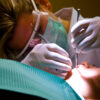Here Comes the Sun (Part 1): Take Cover!
by Michelle Place, CRNP-P
The sun.
The center of our universe.
Giver of light, heat and
skin damage that can lead to discoloration,wrinkles and cancer.
The ABCs of UVA, UVB and UVC
The sun’s light contains 3 types of ultraviolet rays (UVR) two of which can penetrate the earth’s protective ozone layer. Ninety-five percent of solar radiation that reaches earth is composed of UVA rays which age skin cells leading to long-term skin damage including wrinkles. UVA also plays a role in the development of some skin cancers. The remaining 5% of ultraviolet rays that affect us here on earth are UVB rays which are the main cause of sunburns. UVB rays also lead to most skin cancers. Exposure to UVR also suppresses the immune system which is an important factor in the eventual development of cancer.
When in doubt, check it out.
The deadliest form of skin cancer is melanoma which is rare in children, accounting for about 3% of all pediatric cancers. The bad news: studies show that the incidence of melanoma in US children (newborns to 19 year olds) is on the rise increasing by about 2% every year from 1973-2009. The good news is that when melanoma is caught early the cure rates are very high. http://consumer.healthday.com/mental-health-information-25/behavior-health-news-56/melanoma-rates-rising-in-u-s-children-675015.html
Melanoma in children can look similar to those found in adults (but not always) so look for any spot on your child’s body that:
- is asymmetrical meaning if you cut it in half, you would not get two equal sides
- has irregular borders
- has uneven colors
- has a diameter that is > 6 mm (about 1/4 of an inch)
- is unlike any other lesion on your child
An Unhealthy Glow
Tanning is your skin’s protective response to sun exposure. When exposed to UVR your body normally produces melanin (pigment protein) to try to protect the deeper layers of your skin from damage. Due to this fact people sometimes mistakenly assume that a “prevacation tan” obtained by laying out in the backyard covered in baby oil or visiting a tanning salon in preparation for a sunny vacation will protect against subsequent skin damage. Unfortunately, this flawed thinking actually results in extra radiation exposure not only before but also during the vacation when less sunscreen is applied because it is mistakenly believed that the tan is protective. The truth is that once you exceed your body’s allotment of melanin you will burn.
When your skin is damaged by the sun’s rays, a greater amount of melanin is produced in an attempt to protect your skin from being damaged even more. As a result, your skin changes color. Dark-skinned people turn darker brown, or tan, when they go in the sun whereas light-skinned people turn more red and burn. Besides tanning or burning, a lot of people also get uneven patches of color or freckles following sun exposure. Even if you have naturally dark skin or never burn and always tan, you are not safe. The sun is still damaging your skin and you are still at risk to develop skin cancer and wrinkles in the future.
Skin aging is the result of chronic unprotected exposure to UVR. These damaging rays weaken the skin’s elasticity and result in sagging cheeks, deeper facial wrinkles and skin discolorations later in life.
Whatever Works
Twenty-five percent of sun exposure occurs before 18 years of age and use of sunscreen decreases precipitiously between the ages of 9 and 15 years as tweens and teens strive for more independence.
A recent study showed that adolescent girls’ use of sunscreen increases more after the premature photoaging effects of UV light are emphasized than when the fact that the incidence of melanoma increases is stressed. Take home message: to get your teen-aged girls to protect themselves from the sun it may be more effective to emphasize vanity over fear. http://www.familypracticenews.com/single-view/vanity-not-fear-drives-sunscreen-use-in-teens/ead8d51d665ee005930ada744c274a5d.html
Here Comes the Sun: When to Take Cover
Rules of Sun Protectioncan be divided into 2 categories: when to cover up and how to cover up.
Here are the rules for when:
RULE # 1: DO NOT BURN, avoid suntanning and tanning beds
Sunburn is common. In the United States, approximately 70% of adolescents aged 11-18 years report being sunburned at least once in the previous year. Even though sunburn is self-limited, healing completely after a few days, it is a marker of an increased risk of both melanoma and non-melanoma skin cancers at all ages.
What to expect
When unprotected skin stays too long out in the sun, redness becomes apparent 3-6 hrs after exposure and continues to worsen until it reaches its peak after 12-24 hours. The redness usually subsides in 72 hrs. Skin cracking and peeling are noted 4-7 days later. If the burns are so severe that blisters appear, they heal without scarring in 7 to 10 days.
Be extra careful
Certain physical characteristics increase your chance of sunburn. These include light skin, blue eyes, and red or blonde hair. If you have a lot of moles on your body you are also more susceptible to sunburn.
Additional factors to bear in mind:
- the closer you are to the sun the more likely you are to burn, take extra care when at higher altitudes
- wet skin is more susceptible to sunburn than dry skin
- you are not safe in the pool or the ocean; UVR can penetrate up to 60mm (about 2 feet) underwater
Rule # 2: AVOID THE SUN WHEN IT IS STRONGEST
The amount of UV light reaching the ground depends on a number of factors, including the time of day, time of year, elevation and cloud cover. In general, UVA rays are constant but UVB rays are stronger between 10AM and 4 PM in summer months. They are also stronger the closer you get to the equator.
In order to help you determine when to stay inside, the National Weather Service and the Environmental Protection Agency (EPA) measure the strength of UV rays reaching the ground around noon each day to come up with a UV Indexnumber. The scale ranges from 1 to 11+, the higher the number, the greater the exposure to UV rays, and the higher the chance of sunburn and skin damage that could ultimately lead to skin cancer. More information about the UV Index, as well as your local UV Index forecast, is available on the EPA’s website: www.epa.gov/sunwise/uvindex.html
Poor man’s UV Index:
If you do not have access to the official UV Index you can use The Shadow Test: if your shadow is shorter than you are, the sun’s rays are at their strongest, and it is important to protect yourself.
Rule # 3: SEEK SHADE BUT REMEMBER YOU ARE STILL OUTSIDE
- shade is useful but because sunlight is scattered and reflected it can still get you. A fair-skinned person sitting under a tree can burn in less than one hour.
- clouds decrease UVR intensity but not to the same extent that they decrease heat intensity. When you do not feel as hot it gives you the misperception of protection from sunburn.
- you are not necessarily safe in your car, standard clear window glass absorbs UVB but not UVA rays.
Rule # 4: USE EXTRA CAUTION NEAR WATER, SNOW, AND SAND
- you can burn even when it is freezing outside. Snow reflects back 90% of UVR from the sun
- sand reflects back 15-30% of the sun’s rays
- water reflects 5-20% http://pediatrics.aappublications.org/content/127/3/588.full
To Be Continued …Stay tuned for Here Comes the Sun Part 2- Cover Up, Rub It In and Slip Them On-the how to cover up rules of sun protection











Leave a reply